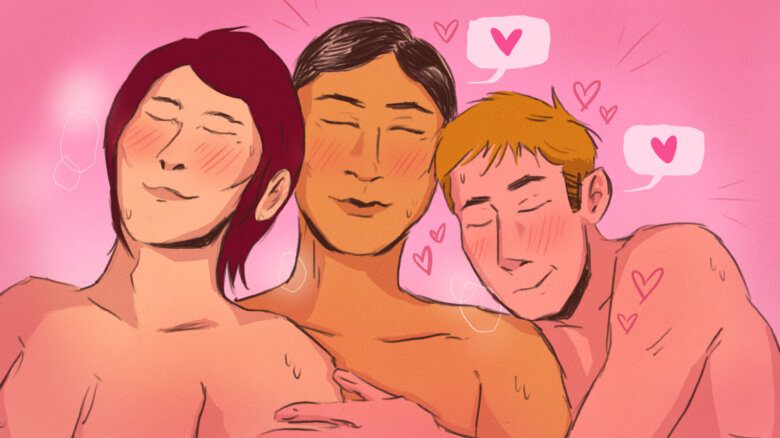“Look Juju! I have a gown…”
She smoothes her hands over the front of her blue shirt, then twirls away in tights and denim skirt to hop, skip and dance to Cyndi Lauper in our living room. “Money, money changes everything…”
At one point she stops and lifts her shirt: “I have a baby in my belly! She’s so cute!” She does a little dance of lifting and dropping her shirt. She makes me laugh, makes me worry, makes me wonder who this little kid really is inside and how I can protect that beautiful essential self from this world of standards, stereotypes and expectations.
I have a two-year-old — “girl” right now — who loves pink, princesses, jewellery and nail polish. She knows who Barbie is, even though I never taught her. She knows she is a girl, even though I never really taught her that, either. Every kid in a skirt is a girl, to her. Did I mention she is only two?
I started reading a book recently called Packaging Girlhood, which doesn’t do much in the way of analysis but does offer up a lot of appalling examples of how the marketing industry teaches little girls to build their self-worth on being cute, sexy, passive, coy and appealing to boys (and then men). The author says that kids start to show an awareness of their prescribed gender, and where it places them in the world, when they’re about three years old. But I am seeing firsthand that it starts even earlier than that, and that marketing does indeed have a lot to do with it.
There have been some truly interesting interactions with butch and boyish women like me on days when I or my partner have chosen Gracie’s clothes, when she is wearing baggy jeans and a baggy sweatshirt, necktie, little toque. And they ask, “How old is your son?” I think it’s interesting that even butch and boyish women see certain clothes and make assumptions.
It breaks my heart, actually. Since having a child and watching the world judge her for what she looks like, I have become so careful about how I address other people’s children. Now I ask, “What’s your child’s name?” And then I use that name in speaking to them and about them so as not to gender them. I have become so conscious of which toys I offer to which children, and when I grab a doll over a truck I deliberately reverse that decision. Even though in many, many cases the child will reach for the thing we would — and have been bred to — expect them to reach for anyway, even at six months, even at 12 months. And I wonder: Is it because that is what has been offered time and time again? Is it because that is what has been illustrated in books and on TV? Or is it a hint of something innate that is perhaps played upon, and highlighted, and augmented, by marketing?
Little kids want heroes. They constantly look for things to be “into.” With Gracie, first it was babies, then Ernie, then Elmo, then In the Night Garden, then Tinkerbell, then Shrek, Dora, The Little Mermaid, Yo Gabba Gabba! and The Doodlebops. She had a brief stint with the Barenaked Ladies, which unfortunately lasted only as long as “Maybe You Should Drive.”
It is so hard to have any control over what she gets into without regulating every minute at Grandma’s house, every minute at daycare, every freebie at the festivals, every second of Treehouse — which we use when we need to take a shower, or clean the kitchen, or call someone to replace the second-floor roof the raccoons have ripped up. The experts say you shouldn’t use TV as a babysitter. Engage with your kids while they watch, they say. But what’s the point of that? If I have the time and energy to engage with my child, I am not usually going to do it in front of the television. TV is a (physically) safe way to keep your kid on the couch, sitting still and feeling happy while you get shit done. Unfortunately, that means I am not always monitoring the messages that come through.
There is an enormous dearth of female-identified characters. Most of the shows we see star male-identified characters, and although I love many of them, it makes me sad. The most amazing movies, like Toy Story 3, only have a handful of female characters: Malibu Barbie, Mrs Potato Head, the nagging wife who packs angry eyes, Bo Peep who mostly flirts with Woody, Jessie the Cowgirl. The rest of the cast is largely male, even though many of the toys are objects that could go either way — animals, an Etch A Sketch, a dinosaur, a slinky dog.
When we read to Gracie, we constantly change the gender of characters to “she” instead of “he.” But I wonder if we just confuse her, because when other people read the same books they don’t do that. I want her to see herself, her current gender, as central instead of peripheral. I want her to know she can be the rescuer and the rescued, the problem-solver and the problem, the big, the small, good, bad, everything and anything she wants to be or struggles not to be.
There is so much more to say: about raising a girl, about being the kind of girl I am, raising the kind of girl she is. This is only the beginning.
 Why you can trust Xtra
Why you can trust Xtra


